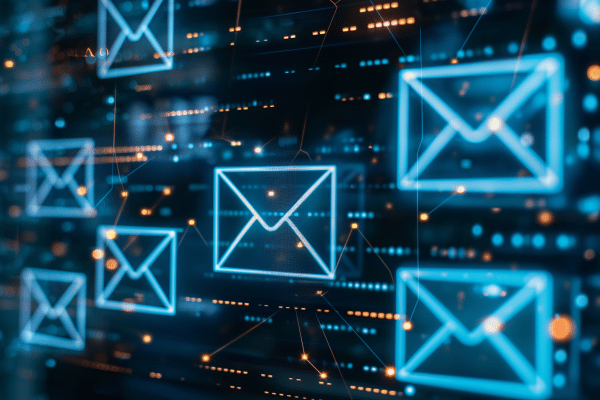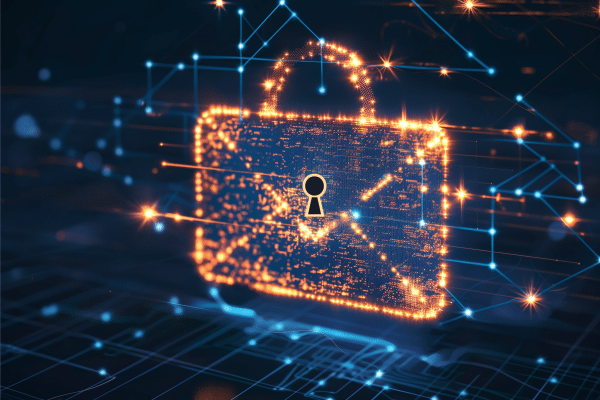Have you heard the buzz about email authentication? There is quite a big reason why people are talking: the prevalence of phishing as a major security threat. As has been the case for many years, phishing remains the main cause of data breaches.
Recently, there has been a major shift in the email landscape as email authentication has become a requirement for email service providers. As with all security related requirements and transitions, it is crucial to pay attention to this shift.
Effective February 2024, both Google and Yahoo implemented a new DMARC (Domain-based Message Authentication, Reporting, and Conformance) policy aimed at businesses sending emails through these providers.
But what is DMARC and why is it suddenly so important? Don’t worry, Vodigy Networks has you covered. Let us help you understand a little bit more why this could be critical for your business.
The Spoofing Problem
With the internet at your disposal, it is easy to imagine how one could go about creating an authentic looking fake email. Put some elbow grease and monetary drivers behind a few cybercriminals and voila: phishing at its finest.
Even the most detail-oriented individuals can be easily duped by an ‘urgent’ email from your bank requiring action. One click and your information has been compromised. The most common name for this method is ‘spoofing’. It is where scammers disguise their email addresses and attempt to appear as legitimate individuals or organizations.
These deceptive tactics can have devastating consequences on companies. These include:
- Financial losses
- Reputational damages
- Data breaches
- Loss of future business
Unfortunately, spoofing is still a growing problem. Part of the reason why email authentication is a critical defense measure.

What is Email Authentication
Very simply, email authentication is a way of verifying that your email is legitimate. Including verifying the server sending the email. It also includes reporting back unauthorized uses of a company domain.
Email Authentication uses three key protocols, and each has a specific job:
SPT (Sender Policy Framework): Records the IP addresses authorized to send email for a domain.
DKIM (DomainKeys Identified Mail): Allows domain owners to digitally ‘sign’ emails, verifying legitimacy.
DMARC (Domain-based Message Authentication, Reporting, and Conformance): Gives instructions to a receiving email server. Including, what to do with results of an SPF and DKIM check. It also alerts domain owners that their domain is being spoofed.
When it comes to their relationships between one another, SPF and DKIM are protective steps. DMARC then provides the necessary information critical to security enforcement. It helps keep scammers from using your domain in spoofing attempts.
How it works:
- A DMARC record is setup in your domain server settings by an MSP like Vodigy Networks. This record informs email receivers (like Google or Yahoo). It tells them the IP addresses authorized to send emails on your behalf.
- Your sent email arrives at the receiver’s mail server. It is looking to see if the email is from an authorized sender.
- Based on your DMARC policy, the receiver can act. This includes delivery, rejection, or quarantine.
- Reporting then comes back from the DMARC authentication. The reports let you know if your business email is being delivered. It also tells you if scammers are spoofing your domain.
Benefits of Implementing DMARC
Implementing DMARC is not just about complying with new policies. It offers a range of benefits for your business including:
Protecting your brand reputation: by preventing spoofing scams from happening in the first place, you can protect against damaging your brand image and customer trust.
Improving email deliverability: Proper authentication ensures deliver. Your legitimate emails reach inboxes instead of junk folders.
Providing valuable insights: These reports offer detailed information. They also give you visibility into how different receivers handle your emails. As well as identifying potential issues. They also improve your email security posture.

Taking Action: How to put DMARC in place
It is exceedingly important to start the process of implementing DMARC now. Especially amidst the rising security concerns with email spoofing.
Getting started is as easy as a call to Vodigy (612-547-3507). Together we can help illuminate your options for DMARC then track and adjust regularly.
All in all, DMARC is but one small piece in the email security puzzle.
Need help getting this all in place? Vodigy is here. Let our knowledgeable experts guide you to technological success.
Are you ready to Unleash the Power of IT?




